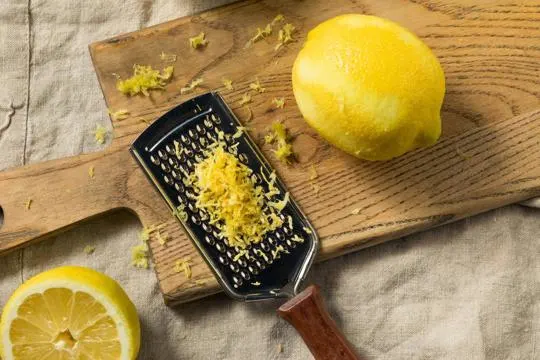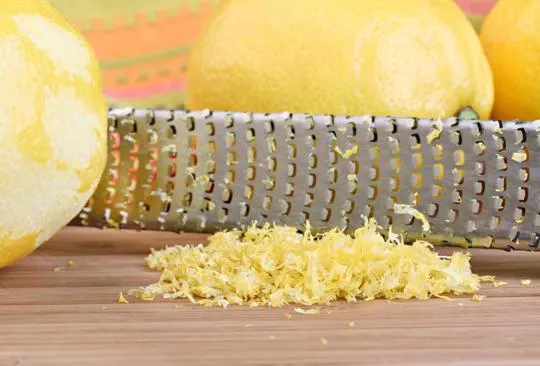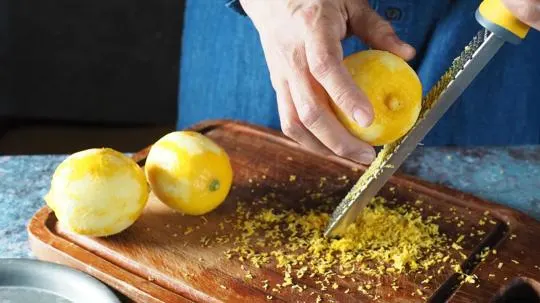Ever stood in the kitchen, zester in one hand and grater in the other, wondering what on earth the big deal is? We’ve all been there.
Fact is, these tools do different jobs. A zester, it’s all about getting that aromatic citrus peel without the bitter white pith. Graters? They’re the go-tos for cheese and more.
Our kitchens, our rules. We’ve faced the confusion, the mix-ups, and the mishaps. Time to clear the air.
This isn’t just about kitchen tools. It’s about making our cooking life a smidge easier. And who doesn’t want that?
What is a Zester?

Zesters are kitchen tools used for zesting fruits like lemons, limes, or oranges.
They remove the fragrant oils in the outer layer of the skin.
Unlike graters, zesters have small sharp holes that produce fine shreds.
These shreds are added to salads, cocktails, or baked goods for extra flavor.
When using a zester, rub the fruit against the sharp holes until you have enough zest for your recipe.
For larger fruits, some people prefer microplane or handheld tools specifically designed for zesting.
With a zester, you can add precise amounts of zest.
And, its small holes make fine shreds that look great in certain dishes.
Some zesters even resemble long spoons with curved ends, making it easier to scrape off the grated zest without getting fingers close to the blade.
If you want to add a citrusy flavor to your dish – especially if presentation is important – a zester may be what you need.
What is a Grater?

A grater is a kitchen tool used for slicing and grating ingredients.
It differs from a zester, as it can handle almost anything – from cheese to potatoes.
Let’s look at 6 points to understand graters better:
- Graters come in different types: box, flat, rotary, and electric.
- The size and blades depend on their purpose.
- The small-holed side is perfect for hard cheeses like Parmesan.
- The large-holed side is ideal for shredding vegetables, like carrots or cabbage.
- Some models come with removable blades for easy cleaning.
- Be careful when using graters – their sharp teeth can cause injury.
Graters can also make soap shavings and DIY paper confetti.
These simple tools offer great shredding abilities that are effective in almost all cooking scenarios.
Differences Between a Zester and a Grater

Zesters and graters look similar but serve different purposes.
Zesters are best for thin zest strips or fine grating of hard cheese.
Graters have bigger holes and can shred cheese or vegetables.
Some graters have finer holes to get a result similar to zesting citrus fruits.
Design and Functionality
Zesters and graters are two handy kitchen tools.
Zesters have long, narrow blades with small sharp edges.
They’re great for removing a thin layer of zest or skin from citrus fruits.
Graters have larger, wider blades with coarser-edged holes.
They work well for grating cheese, vegetables, and other foods.
Zesters come in different shapes and sizes for various types of fruit or food.
Some have serrated edges or curved blades.
Graters can also vary in shape.
Some are rectangular or circular, while others are designed for grating ginger or garlic.
Both tools create fine shreds or ribbons of ingredients.
They add flavor and texture to dishes.
Choose the right tool for the task.
For instance, use a coarse-grained grater for grating hard cheeses, like Parmesan or cheddar.
By understanding the differences between zesters and graters, you can make better decisions when selecting kitchen tools for your recipes.
With practice and patience, you’ll be able to make delicious meals with perfectly grated ingredients every time.
Common Uses
Zesting and grating – two distinctly different kitchen techniques.
Many people often confuse the two, as both tools look alike.
Yet, they serve different purposes.
A zester is a tool that scrapes off the outermost layer of fruit zest or peel without removing the white underneath it.
It has tiny sharp-edged holes that pull out thin slivers of fruit rind, adding a tangy flavor to meals like salads or desserts.
Graters, on the other hand, are utensils used to grate food into small pieces.
They come in various sizes and shapes with varying levels of coarseness.
So, the next time you hear someone confuse ‘zester’ and ‘grater,’ you’ll know better.
Two separate tools, two special roles.
Types of Ingredients Used
When it comes to zesters and graters, the ingredients they are used for differ.
Zesters are often used for citrus fruits like lemons and limes.
Graters can be used for a range of items such as cheese, vegetables, and garlic.
These tools create different textures.
Zesters give fine shreds or strips, while graters produce larger pieces.
This texture difference is essential for recipes.
Zest adds flavor, while grated pieces may add texture.
Picking between a zester or grater depends on the desired texture and intensity of flavor.
Both tools have advantages for cooking or baking.
Texture and Size of Resulting Shreds
A zester and a grater are two different kitchen tools to shred food.
A zester creates thin shreds, such as citrus zest, ginger, garlic, and Parmesan cheese.
It grates the ingredient into fine threads, without taking off any of the fruit or vegetable.
Whereas, a grater has larger holes, perfect for thick slices or long strands of veggies or cheese.
The blade type affects the shredding technique too.
Some graters have wide blades, others have fine blades with varying sharpness and texture.
Similarities Between a Zester and a Grater

Zesters and graters are two kitchen helpers.
Though they have different uses, they look similar.
Both have sharp edges with tiny cutting surfaces.
The grater slices the item like cheese or vegetables when you move it up and down.
With a zester, drag it across citrus fruits to get thin slices of peel or zest.
Be careful with both tools, as the blades are sharp.
A zester has holes instead of teeth, so it’s not for shredding.
It’s smaller than most graters, and easier to hold in your hand than a box grater.
How to Choose Between a Zester and a Grater?
Zesters and graters are different.
Pick the one based on the food you’re preparing.
- Lemons or limes? A zester for fine shreds of zest.
- Cheese or root vegetables? Grater for coarser shreds.
It depends on the recipe too.
- Fine grated cheese or coarser shreds?
Also, storage space and budget are factors.
- Zester or grater?
- Take into account quality and parts.
Remember, each tool has its own uses.
Additional Uses and Features of Zesters and Graters
Zesters and graters are kitchen staples for grating, zesting, and shredding.
But they offer more.
For example, zesters can make decorative garnishes on desserts and cocktails.
Graters with bigger holes are great for grating veggies and cheese in a flash.
Microplanes are perfect to turn small ingredients into fine shreds, such as garlic and ginger.
And zesters can even take away blemishes on produce before cooking.
Plus, graters with different sides let you choose between coarse and fine shredding.
Cheese graters have longer blades to cut through cheese blocks with ease.
These tools can simplify meal prep and add some spice to your dishes.
If making marmalade, it’s best to use a zester.
It gets rid of the bitter outer layer of citrus fruits.
Remember, zesters and graters are similar yet have their own unique purposes.
Zesters are ideal for small fruit rinds and peels.
Graters work best on harder ingredients like nuts or chocolate.
Knowing their strengths will help you choose the right one for the job.
Conclusion
The zester and the grater are tools with a similar purpose.
The zester extracts zest from fruits like lemons and limes.
The grater is used for cheese and other food.
The zester has small, sharp holes.
It removes only the top layer of skin with flavor-inducing oils.
Graters have larger holes and sharper blades.
You can scrape more of a fruit or food with them.
Graters come in different forms and styles than zesters.
Both tools are useful for creating flavor in dishes.

Leave a comment